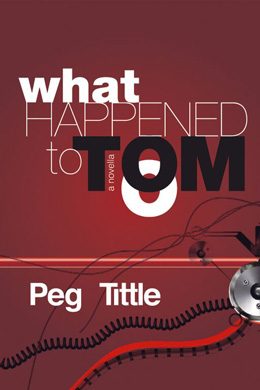 Published May 25, 2016 by Inanna Publications, 130 Pages, ISBN: 978-1-77133-293-4.
Published May 25, 2016 by Inanna Publications, 130 Pages, ISBN: 978-1-77133-293-4. In the fall of 1971, just a few months before Roe v. Wade was first argued before the U.S. Supreme Court, the philosopher Judith Jarvis Thomson published a paper titled, “A Defense of Abortion,” which would go on to become perhaps “the most widely reprinted essay in all of contemporary philosophy.” (Parent, W., “Editor’s introduction” to Thomson, J. Rights, Restitution, and Risk, 1986.) The entire paper filled twenty pages in the original journal publication, but a 166-word thought experiment is surely the most discussed excerpt from it, as well as the one that formed the basis for Tittle’s novella. It’s such a quick read that it’s worth reprinting here in its entirety. (Note: I’ve added underlines to four sections for later discussion.)
“You wake up in the morning and find yourself back to back in bed with an unconscious violinist. A famous unconscious violinist. He has been found to have a fatal kidney ailment, and the Society of Music Lovers has canvassed all the available medical records and found that you alone have the right blood type to help. They have therefore kidnapped you, and last night the violinist's circulatory system was plugged into yours, so that your kidneys can be used to extract poisons from his blood as well as your own. The director of the hospital now tells you, "Look, we're sorry the Society of Music Lovers did this to you--we would never have permitted it if we had known. But still, they did it, and the violinist is now plugged into you. To unplug you would be to kill him. But never mind, it's only for nine months. By then he will have recovered from his ailment, and can safely be unplugged from you.”
For this book review, I don’t want to wade into the arguments for or against abortion, but there are obviously several problems with this thought experiment if you were to try to consider it on its own as completely analogous to a pregnancy. As I have written in a blog post about the thought experiment, “the expected commitment isn't the same—9 months vs. a lifetime of responsibility (or wonder in the case of adoption)—and neither is the personal bond you can expect to develop. The thought experiment also seems highly dependent on the known quality of the person you are being hooked up to, rather than the (somewhat) unknown future of a child. The burden of costs are completely different, the support from family and society wouldn't be the same, the question of when life begins has been thrown out, the infringement on your own freedom is different by type and degree, etc., etc.” Other standard criticisms of Thomson's thought experiment include “the tacit consent objection” (kidnapping is not the same as consensual sex), “the responsibility objection” (women “invite” babies in with their actions), “the stranger versus offspring objection” (parents have legal duties to care for their children), and “the killing versus letting die objection” (abortions kill directly, whereas unplugging is only an indirect means).
These may sound like a damning list of criticisms, but all of them were addressed elsewhere in Thomson’s twenty-page paper. The thought experiment is actually just one element taken from a comprehensive set of arguments that Thomson made against the various points that are usually offered by the pro-Life side. “The Violinist” is therefore not meant to stand on its own, although it is often taken out of context and treated as if it were meant to be. This misunderstood flaw, however, could have been rectified in Tittle’s novella-length treatment of the thought experiment. From an artistic point of view, this is such a difficult scenario to dramatize because the protagonists are literally bound to one another for nine months with very little mobility available to them. Finding ways to add interest and tension to scene after scene after scene—which collectively stretch out over quite a long period of time but take place almost entirely within a single room—would be an extremely difficult task for any author. By addressing all of the standard criticisms listed above, What Happened to Tom could have overcome that problem by providing readers with a chance to hear many good conversations between smart people on both sides of the abortion issue. Unfortunately, that isn’t the case here.
In her novella, Tittle adds little from outside the very narrow scope of the thought experiment. For reasons I can only speculate about, she doesn’t fully explore the nuances of Thomsons’ whole paper. As such, the novella struggles as a work of fiction. What Happened to Tom is only 122 pages long and it’s a very quick read filled with lots of simple dialogue in short punchy sentences, but none of the many characters who flit through the book could be described as philosophically-sophisticated thinkers. In fact, Tom (the kidney donor), Simon (the violinist), all of Tom’s friends and co-workers, and all of the doctors, cops, and lawyers we meet, each turn out to be completely heartless and unhelpful. This might have been done in an effort to make Tom’s continued imprisonment seem plausible, but the result is that What Happened to Tom presents the reader with an incredibly bleak world where every single character is inept, juvenile, and unbelievably rude.
A few pages in, when Tom first wakes up from being drugged at a bar to find that he has been surgically attached to Simon, the doctor matter-of-factly explains the procedure to him, lets Tom rage a bit, and then just says, “Tom, you should be happy,” before she walks out. Shortly thereafter, Tom calls 9-1-1 and gets the brush off because his life’s not in “immediate danger.” The dispatcher says the cops will come see him the next day, even though he’s essentially been kidnapped. And when Tom finally talks to his girlfriend Beth for the first time after the ordeal, she doesn’t make a fuss about this extraordinary situation. She just says, “So what, you expect me to be your office assistant for nine months?” These interactions are intended to be equivalent to what happens to a pregnant woman, but here, for Tom’s highly unusual situation, the reactions continually ring false. I kept saying to myself as I read this that human beings just wouldn’t act this way.
Finally, near the very end of the book, we get one of the (surprisingly) rare dialogues between Tom and the man he’s attached to for nine months. When Simon asks why Tom didn’t explain this whole situation to his boss (who fired him, in another false equivalency), Tom tells Simon it’s none of his business. Simon responds by saying, “You still don’t know what makes you tick. … You’re a coward then.” After a little more back and forth, Tom says “Oh, shut up then! Just shut the fuck up!” The doctor entered the room at that time and upon hearing this outburst explains, “He’s lost control. Actually, that’s not quite right either. Lots of men lose control and it’s quite respectable. It’s called rage. He’s had control taken from him. And not only that. It’s been taken from him by a woman.” We’re told that Tom realized she was right and then said, “So? What’s wrong with that?” The doctor asked him, “Don’t you see how insulting that is?” “To who?” Tom replied. And the doctor finished with, “I rest my case.” After an entire novella full of such piling on top of Tom, this seems to be where Tittle rests her case too, but it is an unsatisfying climax.
While Tittle did decide to confine herself to the narrow issues contained in the thought experiment, we can see from these passages I’ve shared that Tittle also decided to make some substantial deviations from “The Violinist” when compared to the underlined portions of the experiment copied above. Tittle’s Tom was chosen at random, rather than carefully and as a good match. Tittle’s doctor was never sorry, and rather than blocking the Society of Music Lovers from operating on Tom, her doctor drugged him and did the operation without his consent. And at the end of the novella, we are told that Tom will not be obligated “only for nine months,” but that he’ll have to come back to help Simon for a few hours every day for the next several years. We might guess at why Tittle made such changes, but no matter the reason for them or the outcome of the debate over whether these were morally relevant changes or not, we can definitively state that What Happened to Tom is not perfectly faithful to the original thought experiment.
Because of the extreme scenarios in the story that just don’t ring true to life—which are not surprising, given they were based on an imperfect analogy to pregnancy to begin with--What Happened to Tom is not a work of fiction that can be read out of context. It is just too unbelievable. Additionally, just as “The Violinist” thought experiment did not stand on its own in its original philosophy paper, this novella also does not stand on its own as a thoroughly persuasive case for abortion rights. It is certainly an interesting artistic and philosophic endeavor, but because of its inherent flaws and authorial choices, the novella can only be recommended for philosophy teachers using it to provoke classroom discussion, or possibly for readers who enjoy revelling in extreme arguments against either pro-life advocates or any man who treats pregnant women with disdain. As someone who is outside of these target groups, I found What Happened to Tom to be a frustrating experience, albeit a thought-provoking one. Your experience may differ.
Disclosure: I was given a free copy of this book by its publisher Inanna Publication and Education Inc. for the purposes of a review.

